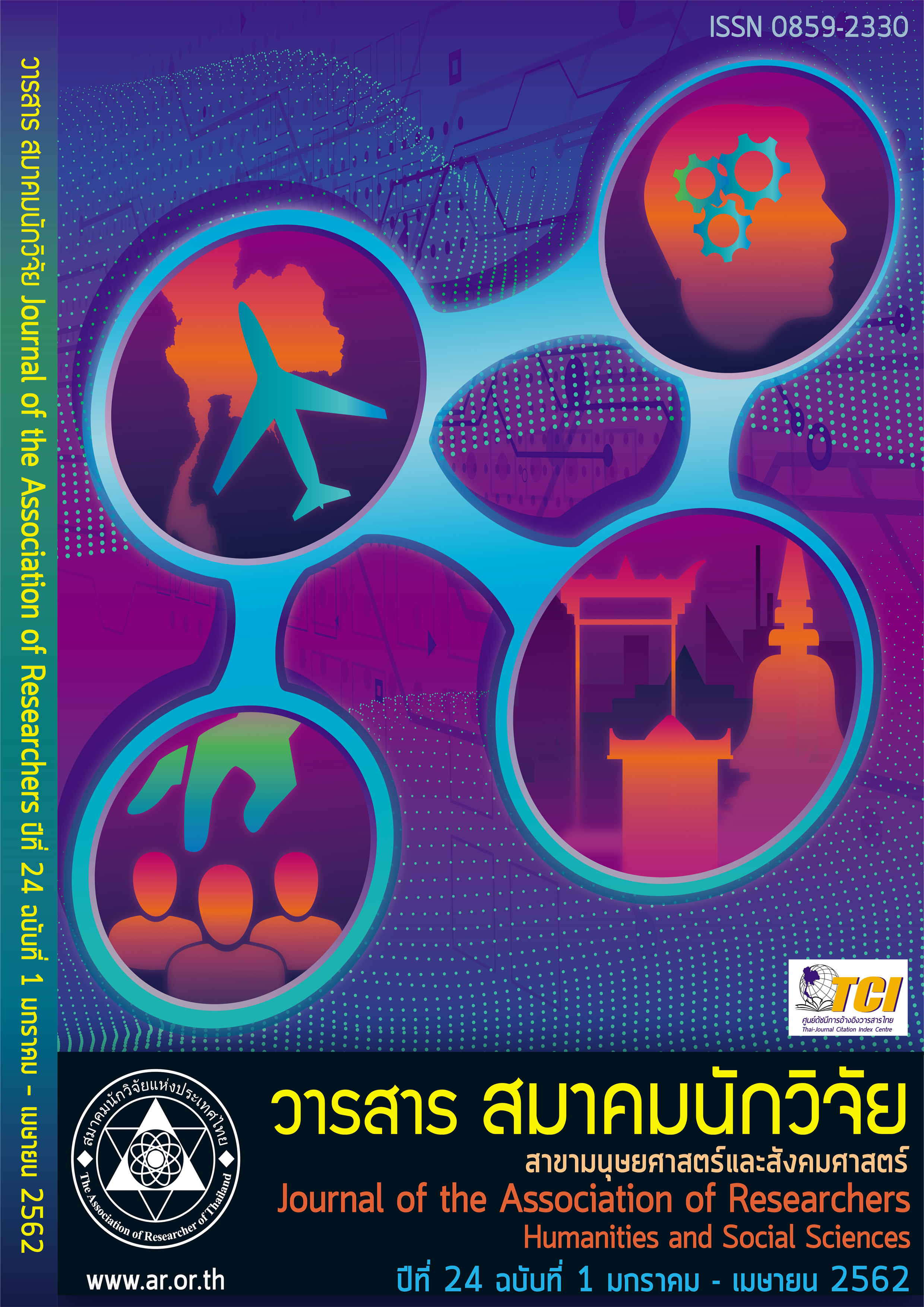Structural Equation Modeling of Self-Disclosure in Online Social Network on Undergraduat Students of Private Universities in The Central Region of Thailand
Main Article Content
Abstract
The objectives of this research were 1) to study self-disclosure through Social Media: 2) to analyze the element of self-disclosure through social media and 3 to examine the accordance of the element model of self-disclosure through social media of undergraduate students of private universities in central region of Thailand with empirical information. The target group consisted of undergraduate students (4 years program) of private universities in the central region of Thailand in the academic year 2016. By choosing a random sample of snowball and the specific property, the number 30 people to use in the interview and the 400 people to use in the inquiry by questionnaire. Data were analyzed by content analysis and factor analysis. The study results found that self-disclosure through social media in 5 dimensions: 1) breadth dimension 2) depth dimension 3) purpose dimension 4) honesty dimension and 5) positive and negative presentation dimension. The element of self-disclosure through social media and of undergraduate students of private universities in the central region of Thailand had 6 elements and had the accordance with the empirical information that 1. Narrative of their own. 2. Follow the stories of others. 3. to inspire life. 4. Memoirs of the event. 5. Identification and explain 6. Intention and consideration. The variance was 68.972 percent and is consistent with empirical data.
Article Details
บทความที่ปรากฏในวารสารนี้ เป็นความรับผิดชอบของผู้เขียน ซึ่งสมาคมนักวิจัยไม่จำเป็นต้องเห็นด้วยเสมอไป การนำเสนอผลงานวิจัยและบทความในวารสารนี้ไปเผยแพร่สามารถกระทำได้ โดยระบุแหล่งอ้างอิงจาก "วารสารสมาคมนักวิจัย"
References
Hashem Abdullah Almakrami. (2015). Online Self-Disclosure Across Cultures : A study of Facebook use in Saudia and Australia. Doctor of Philosophy. School of Information System Science and Engineering Faculty: Queensland University of Technology.
Jin Yeong Bak, Chin-Yew Lin, Alice Oh. (2014 ). Self-disclosure topic model for classifying and analyzing Twitter conversations. Proceedings of the 2014 Conference on Empirical Methods in Natural Language Processing (EMNLP). P 1986-1996.
Jourard. (1971). Self-disclosure: An experimental analysis of the transparent self. Oxford, England: John Wiley.
Krisporn Prasitvisit. (2015). Communication and social capital through Facebook and quality of life in the real world. Thesis, Doctor of Philosophy, Graduate School, Dhurakij Pundit University. (in thai).
Office of Electronic Transaction Development Public Organization. (2015). User Behavior Survey Report Internet in Thailand, 2015. Pages 30-53. (in thai).
Pitchayanee Pootrakul Pseudomontha. (2016). Self-Disclosure through Social Media: The Guideline for Study on Influential Factors and Effects. Journal of Behavioral Sciences for Development Behavioral Science Research Institute. Srinakharinwirot University. p2-16. (in thai).
Richard Johnson, Dean Wichern. ( 2007). Applied Multivariate Statistical Analysis (6thed.). Upper Pearson Education,Inc.
Shan Xu, Zheng Wang, Prabu David. (2016). Media multitasking and well-being of university students. Computers in Human Behavior. p.242-e250.
Stutzman. (2011). Factors Mediating Disclosure in Social Network Sites. Computers in Human Behavior. P.590–598.
Wang Michael Stefanone. (2013). Showing Off? Human Mobility and the Interplay of Traits, Self-Disclosure, and Facebook Check-Ins. Sage Journals Vol31.
Wheeless Grotz. (1976). Conceptualization and Measurement of Reported Self-Disclosure. Human Communication Research .P. 338–346.
Wililuk Sareetrakul. (2559). The effect of using Facebook on teaching performance in Students. BU ACADEMIC REVIEW. Pages 129-139. (in thai).


